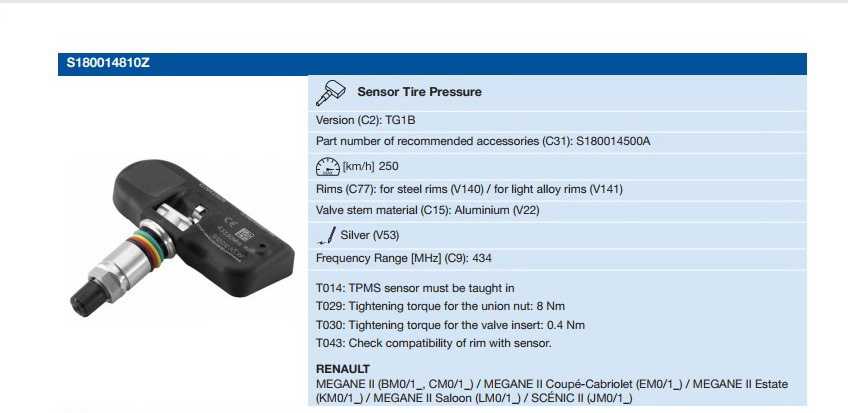The purpose of the tire pressure monitoring system (TPMS) in your vehicle is to warn you that at least one or more tires are significantly under-inflated, possibly creating unsafe driving conditions. The TPMS low tire pressure indicator is a yellow symbol that illuminates on the dashboard instrument panel in the shape of a tire cross-section (that resembles a horseshoe) with an exclamation point.
That indicator light in your vehicle has a history. It’s a history rooted in years of uncertainty about proper tire pressure and many serious car accidents that might have been avoided had drivers known their air pressure was low. Even now, it’s estimated that a substantial number of vehicles hit the road each day with underinflated tires. However, proper tire maintenance with the aid of a TPMS can and does help prevent many serious accidents.
Before this indicator light became commonplace, knowing whether your air pressure had reached unsafe levels meant getting out, crouching down, and using a tire gauge. With few exceptions, this was the only pressure-checking tool ordinary consumers had at their disposal.
Then, in response to a surge in accidents due to underinflated tires, the US government passed the Transportation Recall Enhancement, Accountability, and Documentation (TREAD) Act. One of the outcomes of this legislation is that most vehicles sold in the United States since 2007 include a tire pressure monitoring system of some kind.
Not every TPMS works the same way. The illumination of the low tire pressure indicator represents the final step in the process of either an indirect TPMS or a direct TPMS.
An indirect TPMS typically relies on wheel speed sensors that the anti-lock brake system uses. These sensors measure the rate of revolution each wheel is making and can be used by on-board computer systems to compare with each other and to other vehicle operation data such as speed.
Based on the rate of revolution of each wheel, the computer can interpret the relative size of the tires on your vehicle.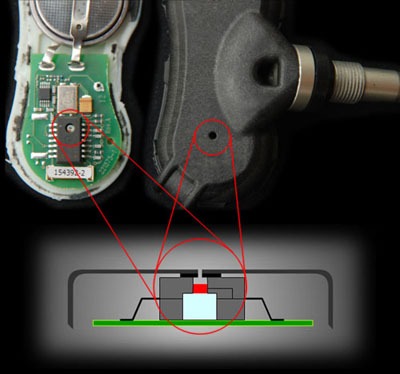 When a wheel starts spinning faster than expected, the computer calculates that the tire is underinflated and alert the driver accordingly.
When a wheel starts spinning faster than expected, the computer calculates that the tire is underinflated and alert the driver accordingly.
So, an indirect tire pressure monitoring system doesn’t actually measure tire pressure. It’s not electronically processing the same kind of measurement you might see with a tire gauge. Instead, an indirect tire pressure monitor simply measures how fast your tires are rotating and sends signals to the computer that will actuate the indicator light when something in the rotation seems amiss.
-- Relatively inexpensive compared to a direct TPMS
-- Requires less programming/maintenance over the years than a direct TPMS
-- Less overall installation maintenance than its direct counterpart
-- May become inaccurate if you purchase a bigger or smaller tire
-- May be unreliable when tires are unevenly worn
-- Must be reset after properly inflating every tire
-- Must be reset after routine tire rotation
Direct TPMS uses pressure monitoring sensors within each tire that monitor specific pressure levels – not just wheel revolution data from the anti-lock brake system.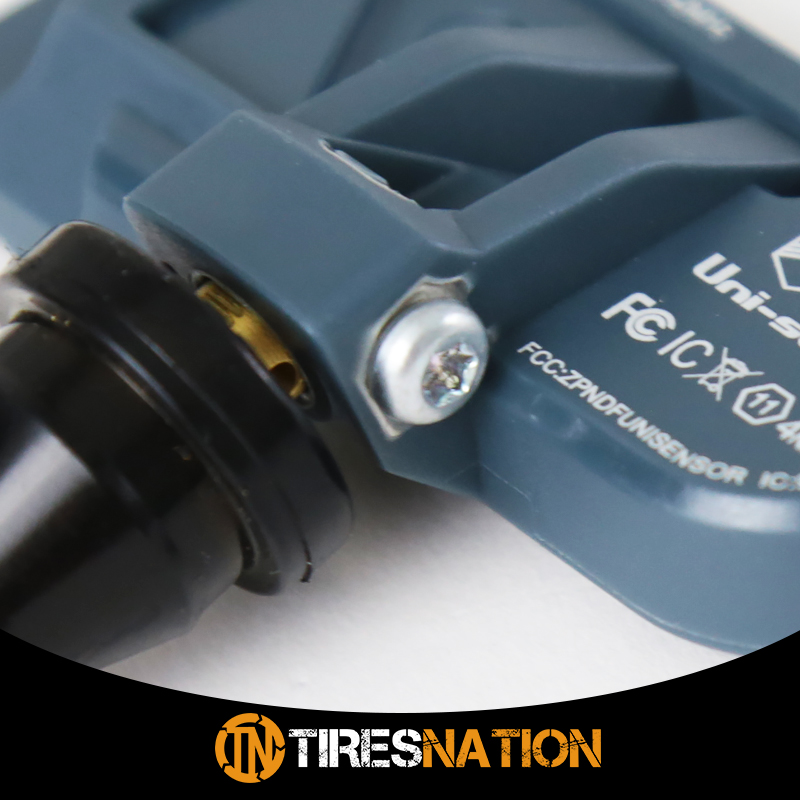
Sensors in a direct TPMS may even provide tire temperature readings. The direct tire pressure monitoring system sends all of this data to a centralized control module where it’s analyzed, interpreted, and, if tire pressure is lower than it should be, transmitted directly to your dashboard where the indicator light illuminates. A direct tire pressure monitor usually sends all of this data wirelessly. Each sensor has a unique serial number. This is how the system not only distinguishes between itself and systems on other vehicles, but also among pressure readings for each individual tire.
Many manufacturers use proprietary technology for these highly specialized systems, so replacing a TPMS in a way that’s consistent and compatible with your vehicle will require an experienced, knowledgeable technician.
-- Deliver actual tire pressure readings from inside the tire
-- Not prone to inaccuracies because of tire rotations or tire replacements
-- Simple resynchronization after tire rotation or tire replacements
-- Batteries inside the sensors usually last for about a decade.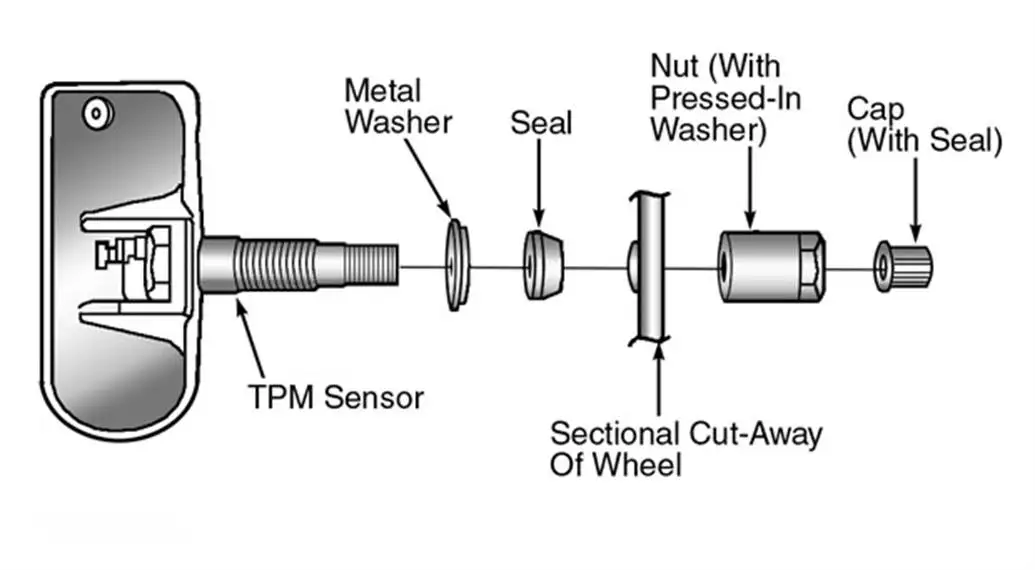
-- May be included in a vehicle’s spare tire
-- More expensive overall than an indirect TPMS
-- Though simple, resynchronization may require costly tools.
-- Battery rarely serviceable; if the battery is drained, the whole sensor must be changed.
-- Proprietary systems make installation, service, and replacement confusing for consumers and auto shops.
-- Sensors are susceptible to damage during mounting/demounting
Although the methods may be different, both systems serve the same purpose and activate the same indicator light. Even though a TPMS can deliver accurate alerts when properly maintained, it’s not a replacement for manual air pressure checks, consider it just another item in your car maintenance toolbox.
There’s never a good time for a flat. That’s why Bridgestone DriveGuard tires are masterfully engineered to keep you moving for up to 50 miles at speeds up to 50 MPH without disruption.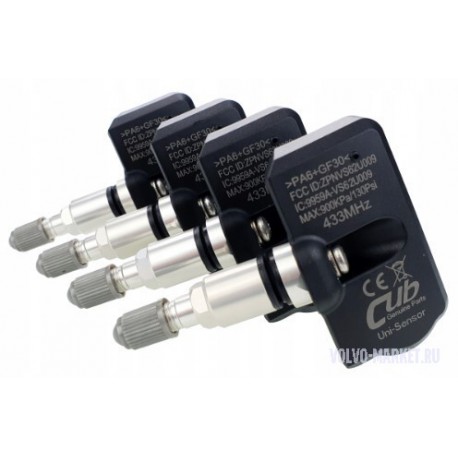
There’s never a good time for a flat. That’s why Bridgestone DriveGuard tires are masterfully engineered to keep you moving for up to 50 miles at speeds up to 50 MPH without disruption.
See Details Find Your Fit
The Tire Pressure Monitoring System (TMPS) is an electronic system in your vehicle that monitors your tire air pressure and alerts you when it falls dangerously low.
To help drivers recognize the importance of tire pressure safety and maintenance, Congress passed the TREAD act, which requires most vehicles made after 2006 to be TPMS–equipped.
There are two different types of systems being used today: Direct TPMS and Indirect TPMS.
Direct TPMS uses a sensor mounted in the wheel to measure air pressure in each tire. When air pressure drops 25% below the manufacturer’s recommended level, the sensor transmits that information to your car’s computer system and triggers your dashboard indicator light.
Indirect TPMS works with your car’s Antilock Braking System’s (ABS) wheel speed sensors. If a tire’s pressure is low, it will roll at a different wheel speed than the other tires. This information is detected by your car’s computer system, which triggers the dashboard indicator light.
TPMS notifies you when your vehicle’s tire pressure is low or is going flat. By helping you maintain proper tire pressure, TPMS can increase your safety on the road by improving your vehicle’s handling, decreasing tire wear, reducing braking distance and bettering fuel economy.
Your vehicle has TPMS if the "low tire pressure" warning light appears on your dash when the key is turned to the "on" position.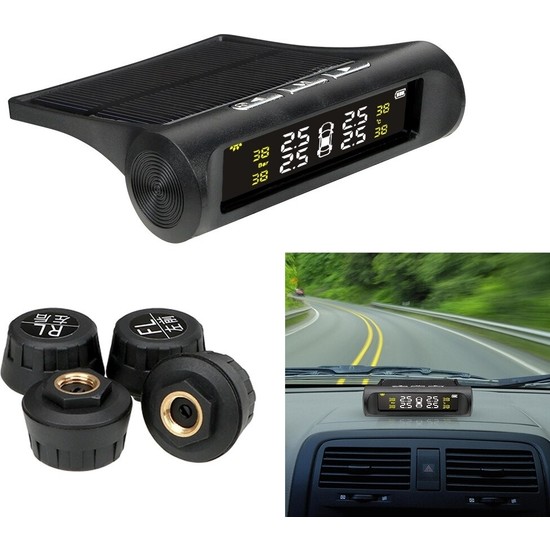
Check the air pressure in your tires and inflate any tire that is low (according to the manufacturer’s recommendation). When the tire is at the appropriate pressure, the indicator light should go off.
If necessary, replace the tire with your spare tire and visit your local Tires Plus store for needed repairs or replacement. They’ll check your vehicle’s tire pressure and perform a systems test on all of your tire sensors to diagnose the problem. Once our technicians address your vehicle’s tire needs, they’ll then suggest the proper maintenance to get you back on the road safely.
Direct TPMS equipped tires cost slightly more to maintain than non–equipped tires because proper care requires extra parts and labor. The valve service kit, which includes the valve core, cap, nut and o–ring (seal), must always be replaced when a tire is dismounted for service or replacement. A special TPMS tool and additional time are also needed to check and reset the sensor system.
A special TPMS tool and additional time are also needed to check and reset the sensor system.
{{storeNumber}}
{{storeName}}
{{link-icon "Call Us" mobileCallLink null "call-cta"}} {{link-icon "Directions" directions "_blank" "directions-cta"}}
{{address}}
{{city}}, {{state}} {{zip}}
{{#if activeFlag}} {{#ifCond mystore "or" myPreferredStore}} {{#ifCond storeType 'eq' "TPL"}}
*Call store for appointment {{phone}}
{{else}} {{#if onlineAppointmentActiveFlag }}
{{#if myPreferredStore}}
{{else}}
*Call store for appointment {{phone}}
{{/if}} {{/ifCond}} {{else}} {{#ifCond storeType 'eq' "TPL"}}
*Call store for appointment {{phone}}
{{else}}
Schedule Appointment {{#if onlineAppointmentActiveFlag}} {{else}}
*Call store for appointment {{phone}}
{{/if}}
{{/ifCond}} {{/ifCond}} {{else}}
*Temporarily Closed Due To: {{temporarilyClosedReason}}
{{/if}} {{#if isMilitaryStore}}
*This location is on an active US military base.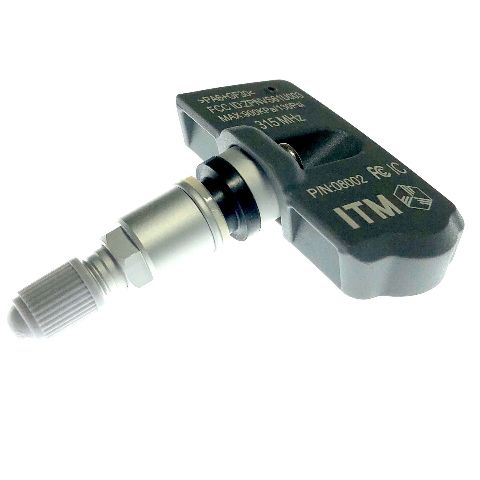 You may need military ID to access the location.
You may need military ID to access the location.
{{/if}}
When the tire pressure monitoring system (TPMS) light comes on on your car's dashboard, it usually means that the air pressure in one or more tires has dropped below the expected level. But, unfortunately, due to the peculiarities of the operation of this system, very often the low tire pressure icon lights up on the tidy by mistake.
First, if your car is equipped with a tire pressure monitoring system, it is important to remember that it does not relieve you of regularly checking tire pressure, as well as inspecting the condition of the tires. Although turning on the TPMS light can be a great puncture warning (a tire pressure monitoring system cannot replace physical inspection of the wheels for damage), and also free you from checking tire pressure with a pressure gauge.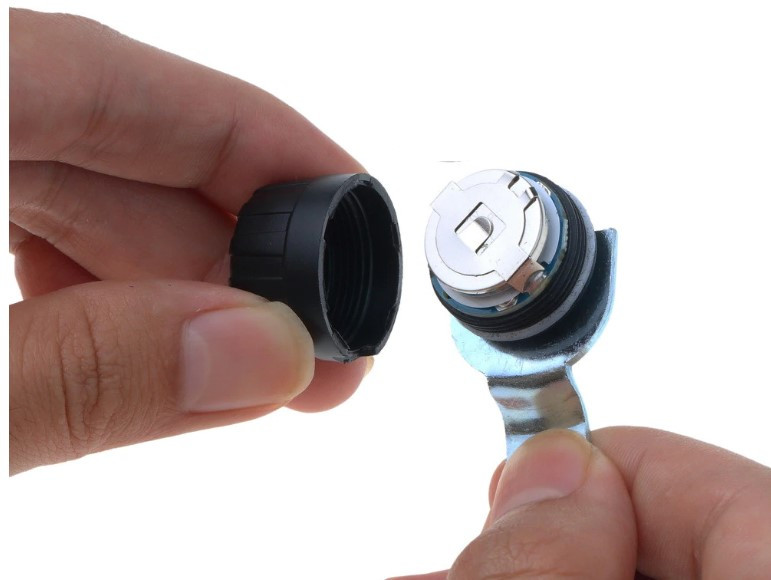
If you have a car with TPMS, that means there is a wireless sensor in every tire. Each sensor transmits data to a computer, which in turn analyzes the data with reference values and, in the event of a data discrepancy for any wheel, turns on an icon on the tidy to warn the driver about low tire pressure. Moreover, the indicator can light up both with insufficient pressure in one or more wheels, and with its excessive value.
See also How to prolong the life of car tires: The most important tips
But why do we need this system, if quite often it misleads drivers? In fact, the appearance of a low tire pressure icon on the tidy is the best reason to stop the car, take the pump with a pressure gauge and check the tire pressure. The tire pressure monitoring system still most often transmits important information for the driver. In 75% of cases, the warning of the tire pressure monitoring system really indicates problems in the wheels.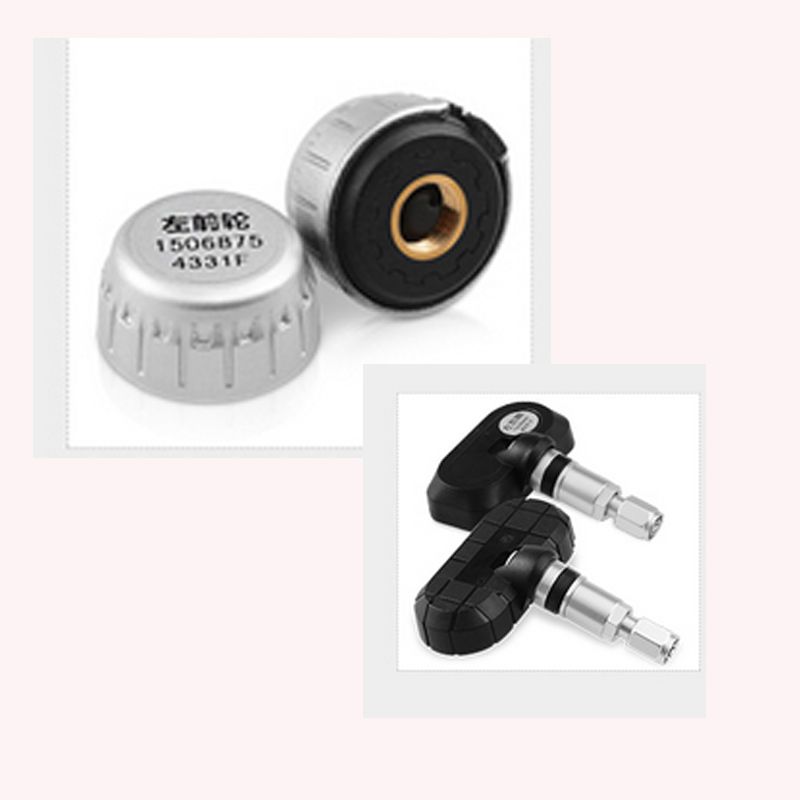
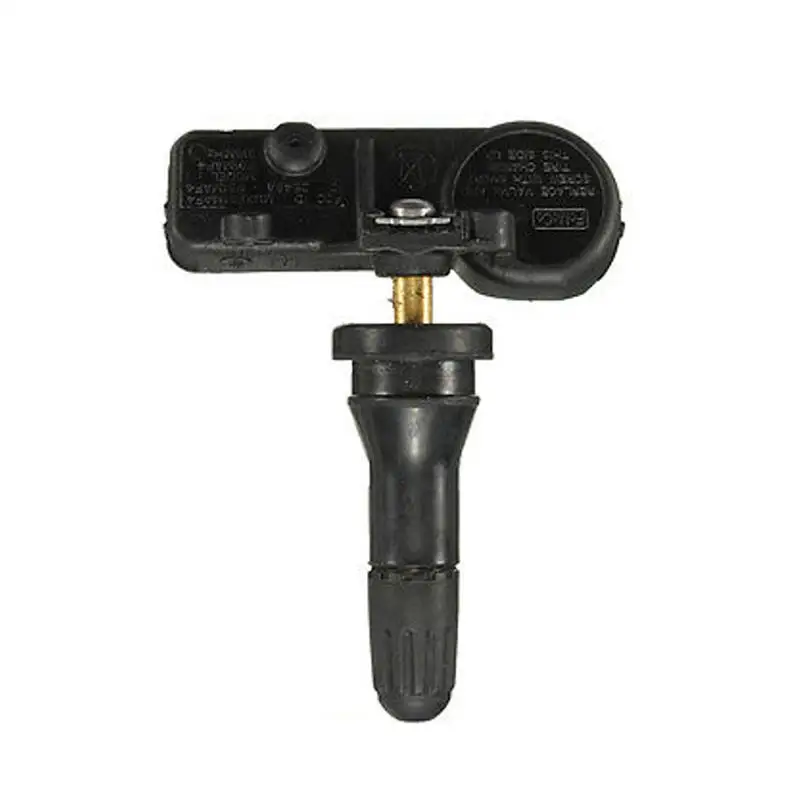 When the air is compressed due to cold weather or heats up, the tire pressure sensor is triggered.
When the air is compressed due to cold weather or heats up, the tire pressure sensor is triggered. 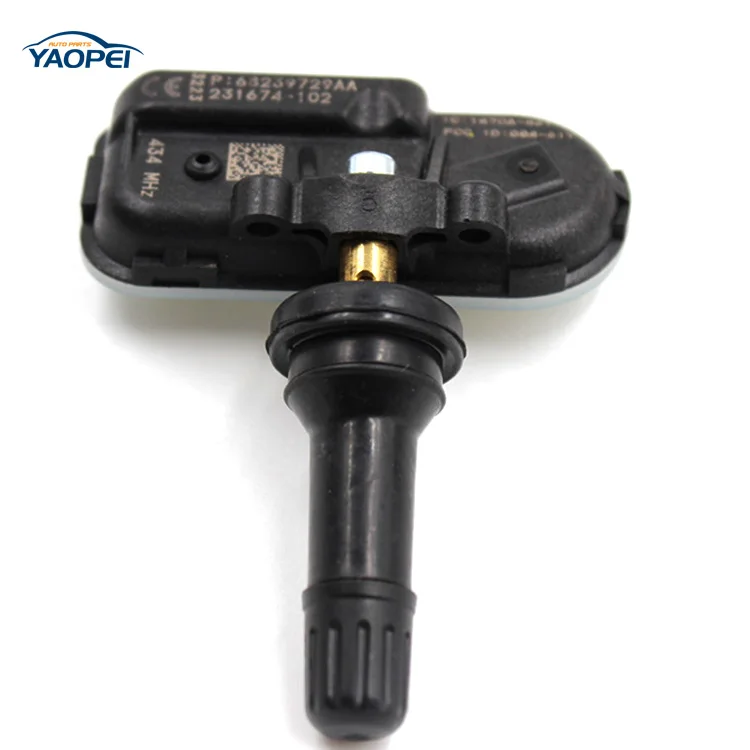
In most cases, your car's tires are filled with air that is identical to the air in the atmosphere. But sometimes tires are filled with nitrogen instead of air. However, the same rules of thermodynamics apply to nitrogen that apply to the mixture of nitrogen, carbon dioxide, and oxygen, as well as other elements that make up the air we breathe and that we typically fill car tires with.
According to the laws of physics, if the temperature of a gas decreases, the pressure also decreases. Since the tires in a car are more and less a closed system, this essentially means that when the temperature of the air in the tire goes down, the air pressure in the tire goes down as well.
This is also true when the pressure rises due to an increase in temperature. As the gas expands as it heats up, it has nowhere to go because it is in the confined space of the tire, and the pressure increases as a result.
As the gas expands as it heats up, it has nowhere to go because it is in the confined space of the tire, and the pressure increases as a result.
See also What is the correct tire pressure for various off-road conditions
The exact increase or decrease in tire pressure depends on a number of factors. But on average, it is believed that when the ambient temperature drops by 10 degrees Celsius, the tire loses about 0.07 bar and, conversely, when the temperature rises by 10 degrees, the tire pressure increases by about 0.07 bar.
Tire pressure problems are most common in winter. And this is logical, since in winter there are sharp temperature drops. This is especially true for the northern regions of the country, where the winter is very cold.
For example, if you inflated your car tires in August according to the factory specification, when the ambient temperature was 26 degrees, then with the onset of cold weather in late autumn, when the temperature outside dropped to -17 degrees, the pressure in the tires of your car will fall by about 0.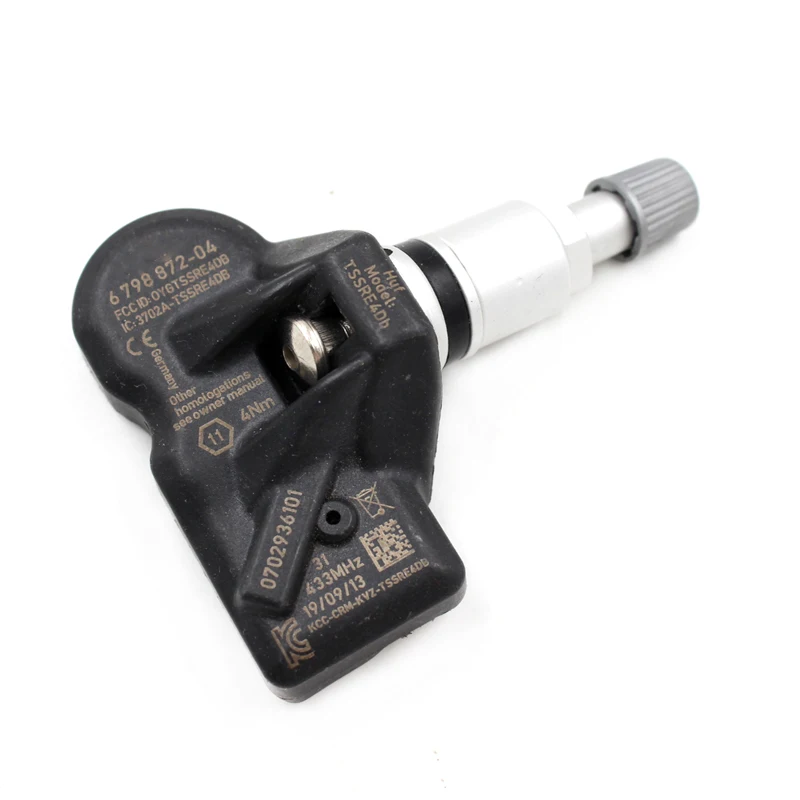 34 bar.
34 bar.
By the way, due to sudden changes in temperature at night and during the day in winter, the tire pressure monitoring system can start acting up. For example, if you get into your car early on a frosty morning and notice that the TPMS light comes on, but then goes off after a few hours, this indicates that tire pressure is changing due to temperature changes. In this case, we would advise not to change the tire pressure, as this is fraught with the fact that during the daytime the tire pressure will be excessive, which will lead to premature wear of the rubber tread.
Tire pressure may also change while the vehicle is in motion. The fact is that the friction of the tires causes them to heat up, which in turn causes the air inside the tires to heat up. This is one of the reasons automakers recommend inflating tires when they are cold rather than hot after the car has been driven.
Thus, there is a real possibility that the tire pressure monitoring system will warn you of insufficient tire pressure early in the morning, but after a while the vehicle is moving, the indicator will turn off on the tidy.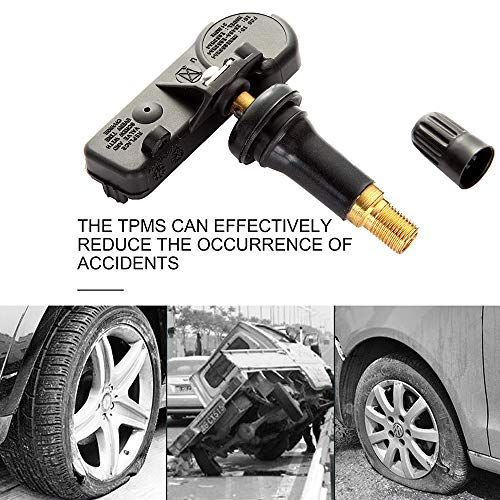
If you check your tire pressure in the morning before you set off, you realize that the pressure is not low, but the tire pressure indicator on the tidy is on or flashing , most likely, in one of the wheels there is a malfunction of the pressure sensor. This error is not very common. But still, sometimes it happens. By the way, some fluids and dirt from the brake pads can accelerate the process of wear of tire pressure sensors.
On the other hand, if the tire pressure monitoring system warns you of low pressure when the tires are cold, inflating them while they are cold will save you unnecessary TPMS warnings in cold winter weather.
By the way, this is why it is recommended to check and adjust tire pressure several times a year. Especially when the seasons change. For example, with the onset of the cold season, it is recommended to add tire pressure and, conversely, with the onset of spring, it is recommended to slightly reduce the pressure.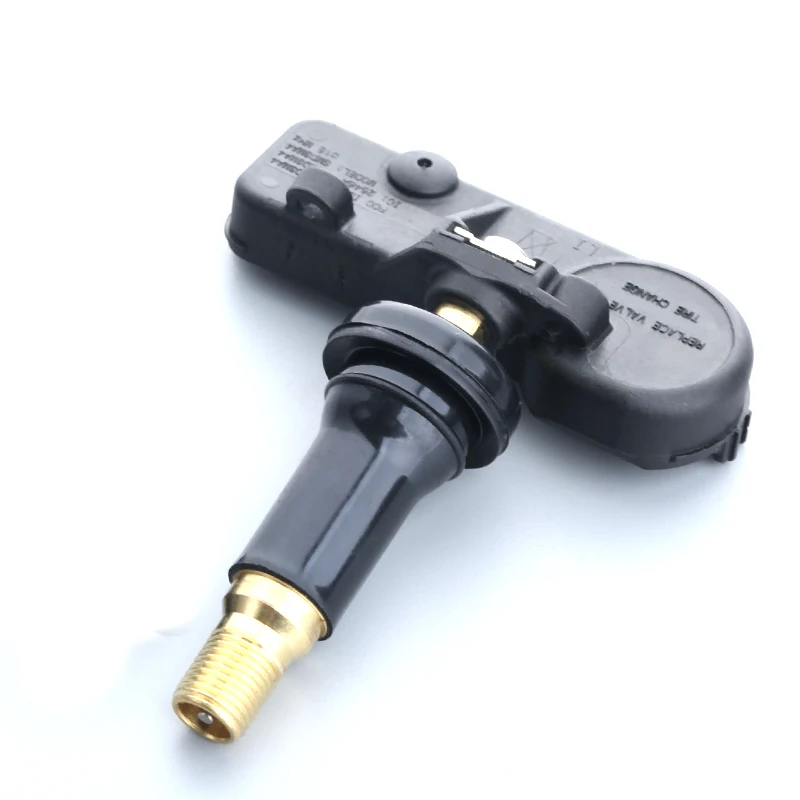 Taking into account changes in ambient temperature during the changing seasons in this way can save you problems with the tire pressure monitoring system indicator.
Taking into account changes in ambient temperature during the changing seasons in this way can save you problems with the tire pressure monitoring system indicator.
 S.
S. 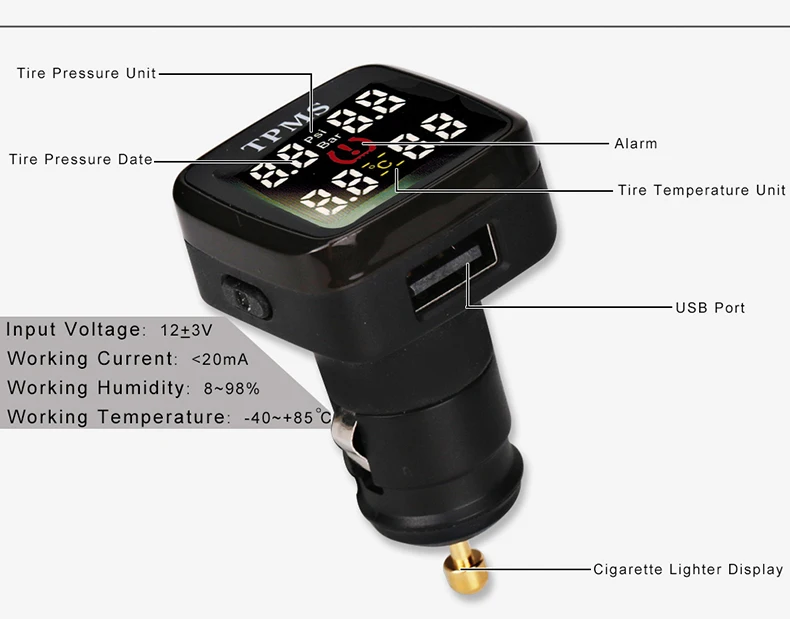 S.
S. | Vitaly Kabyshev, . Photo of manufacturers | |
| A punctured tire is always very annoying. But it is better to know about the flat tire in advance - this is where tire pressure sensors will help. |
The first tire patent was obtained in 1846, and since then the wheels have been constantly punctured. It is clear to anyone that a flat tire does not bode well. Yes, and dropped pressure can be very dangerous: it’s not for nothing that in the “Daily Maintenance” section of the car’s operating instructions, the item “Checking tire pressure” is one of the first.
When a tire "breathes", the rolling resistance increases significantly. Where does this lead? To an increase in fuel consumption, increased tire wear and, of course, to the side slip of the car.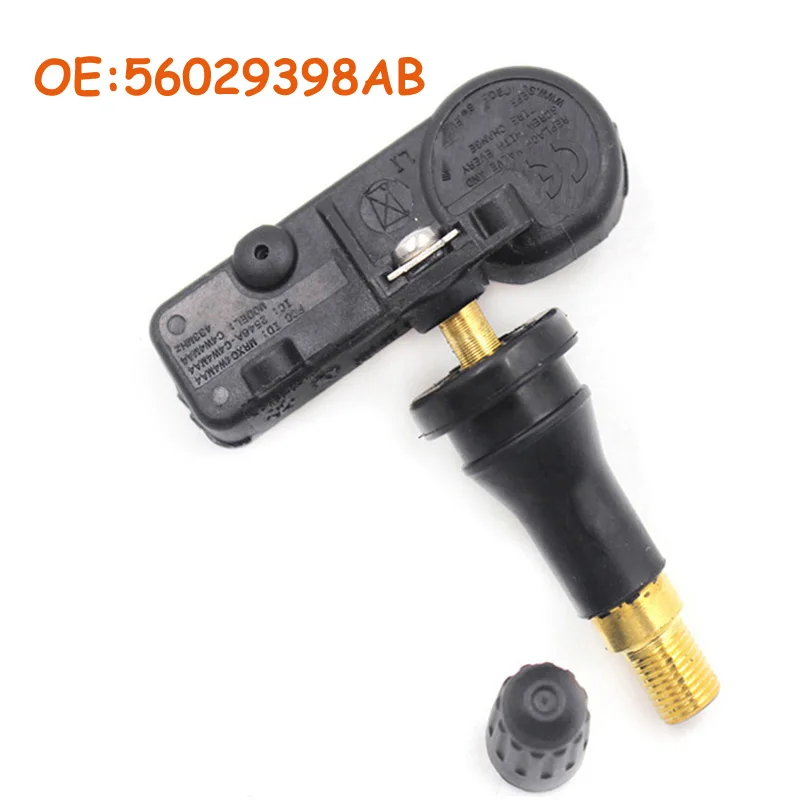 Moreover, such a small drift to the side can be attributed to the slope of the road or rut. So the driver, by mistake or inexperience, can continue to move for quite some time. And the most dangerous thing about this is that in an emergency, for example, during a sharp maneuver or braking, a flat tire can break off the disc or turn over. And here it is not far from the accident.
Moreover, such a small drift to the side can be attributed to the slope of the road or rut. So the driver, by mistake or inexperience, can continue to move for quite some time. And the most dangerous thing about this is that in an emergency, for example, during a sharp maneuver or braking, a flat tire can break off the disc or turn over. And here it is not far from the accident.
Therefore, this disgrace must be fought with all our might. And the sooner the driver notices the loss of pressure, the better. Of course, the easiest way is to check the pressure before the trip by connecting a pump or pressure gauge to each wheel in turn. But we are lazy and forgetful people. And the pleasure of poking around in the cold or in the rain with some kind of devices is small. Moreover, there is already a whole bunch of systems that can check this same pressure.
China-made caps indicate pressure loss by changing color. Informativeness is good, accuracy is questionable.
The simplest of them are special caps with color indicators that are installed instead of the standard caps on the boost valves.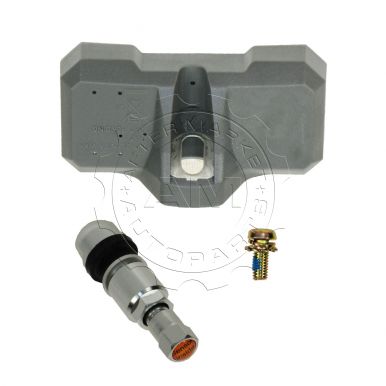 The pressure dropped below, say, two atmospheres - a warning yellow (orange, purple) strip will appear under the transparent cap of such a miracle cap. Yeah, it's clear that something is wrong with the wheel, we need to check. The pressure has dropped even lower - the cap will “paint” in a different, usually red color, which will indicate the criticality of what is happening. The advantage of this approach is simplicity. Minus - not enough good information content. After all, the caps can only be seen during a stop. Still, getting around the car before the trip, looking at the colors of the caps, is much easier than measuring the pressure every time.
The pressure dropped below, say, two atmospheres - a warning yellow (orange, purple) strip will appear under the transparent cap of such a miracle cap. Yeah, it's clear that something is wrong with the wheel, we need to check. The pressure has dropped even lower - the cap will “paint” in a different, usually red color, which will indicate the criticality of what is happening. The advantage of this approach is simplicity. Minus - not enough good information content. After all, the caps can only be seen during a stop. Still, getting around the car before the trip, looking at the colors of the caps, is much easier than measuring the pressure every time.
Another disadvantage is that the caps start informing about the change in pressure only when it falls below some certain values, which, by the way, can be quite normal for your car and your wheels. So, you need to select them exactly for your car.
The radio sensors of many electronic monitoring systems are mounted on the disk using special clamps.
And in order to notice something wrong while driving, it would be nice to have an electronic system on board that would automatically notify you of dangerous pressure drops. And not just notify, but would do it on time (so that there was time to orient) and without false positives.
The installed control system in this case will warn the driver at the right time about the change in the corresponding parameter and give him enough time to stop the car safely. It is clear that in cases of a serious puncture or explosion of a tire, such systems will not help, since the driver will feel the car pull without any sensors. But with a “slow” puncture, such electronics are simply irreplaceable.
There are, for example, systems that transmit tire pressure and temperature data to the central unit via radio. And there are those who can transmit this data via Bluetooth to phones or communicators. Well, it's very convenient.
Pirelli's X-Pressure pressure monitoring system.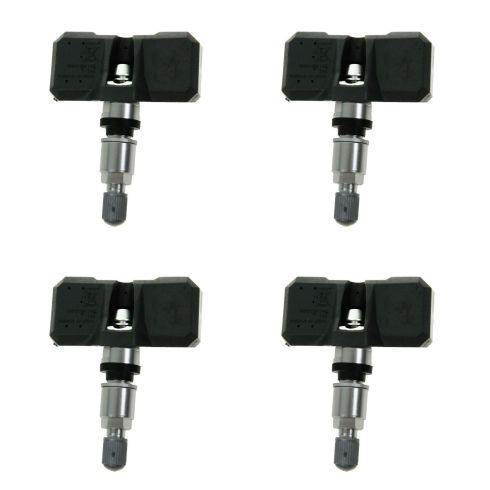 In the simplest version of Optic, it consists of four caps that are installed on regular valves. And they signal a drop in pressure by a change in color.
In the simplest version of Optic, it consists of four caps that are installed on regular valves. And they signal a drop in pressure by a change in color.
But there are more tricky systems that work without "real" pressure sensors, but through ABS. It is they who are usually put in the standard configuration of cars. How do they work?
Electronics with the help of sensors at each moment of time determines the speed of the wheels and their relative difference. As you know, when the pressure drops, the height of the tire profile becomes lower. Consequently, the speed of rotation of the wheel with the "sick" tire increases, therefore, the difference in the frequencies of rotation of the wheels on the same axle also increases. As a result, the system captures these changes - and gives an alarm signal.
Acoustic X-Pressure system. Sensors are built into the caps that register pressure, and radio transmitters that provide communication with the central unit. As soon as the pressure has dropped, a corresponding indication appears on the display of this unit and a warning sound signal is heard. Batteries in caps are enough for about 5 thousand hours of operation, which corresponds to five years of operation. Replacement of batteries in the caps is not provided, therefore, at the end of the service life, the set must be changed completely.
Batteries in caps are enough for about 5 thousand hours of operation, which corresponds to five years of operation. Replacement of batteries in the caps is not provided, therefore, at the end of the service life, the set must be changed completely.
Why is this indirect method of determining tire pressure bad? Such systems can work, for example, in long turns, when for a relatively long time the system detects a large difference in the rotational speeds of the wheels of different sides (after all, the outer wheels spin at a higher speed than the inner ones). And these are flowers.
One of the more sophisticated X-Pressures, AcousticBlue can transmit pressure data via Bluetooth to a mobile phone. There is such a thing from 160 euros.
In some cases, such systems are useless at all. For example, when tires with run-flat technology are installed on a car. Recall that for tires with this technology, even with a complete loss of pressure, the profile height decreases slightly - by about 30-40%.